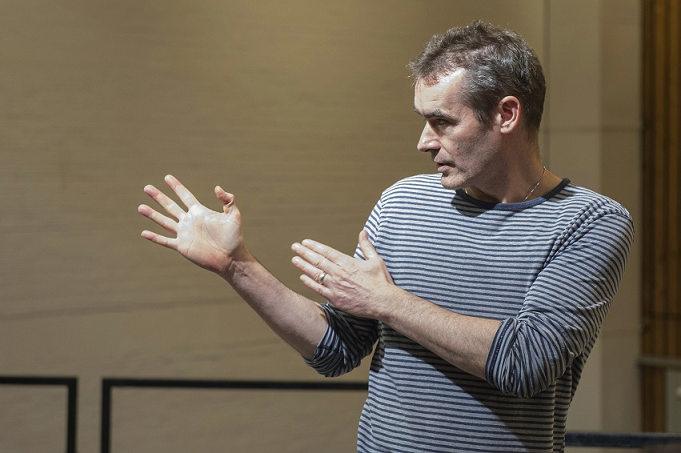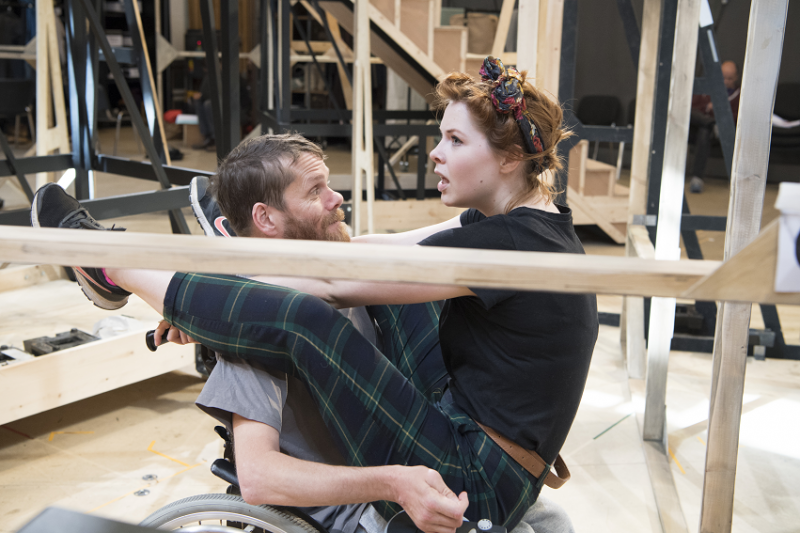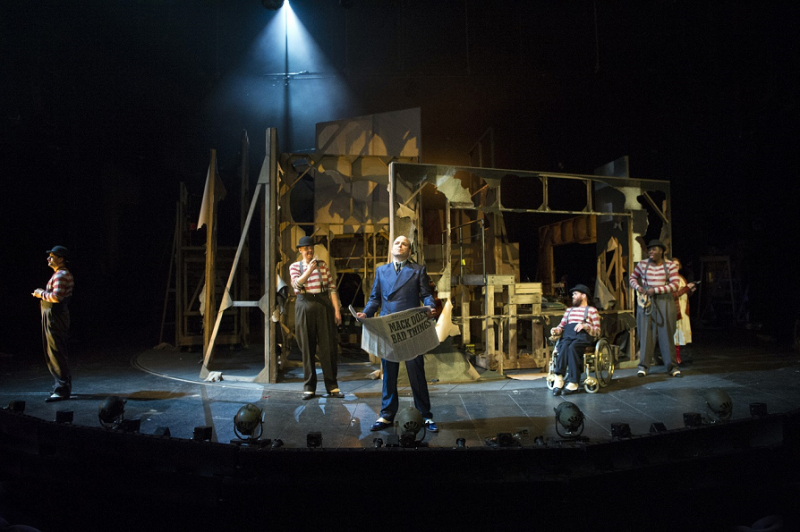
Photo: Richard Hubert Smith
Arts diversity: Interview with the National Theatre’s Rufus Norris
What does the Artistic Director of England’s most highly-funded theatre think about quotas, naming and shaming, and the lack of progress on diversity over the past 20 years? Rufus Norris chats to AP.
If there’s ever going to be a role model for the sector, it has to be the National Theatre, which received £28m in revenue, capital and other grant funding from Arts Council England in 2015 and aims to “reflect the nation” on its stages, in its audiences and among its staff. As the theatre’s Artistic Director, Rufus Norris is in a more influential position than most to trailblaze for diversity, so what is his take on the seemingly intractable issues facing the sector today?
On… understanding diversity
“I gained an awareness of inequality from an early age, heavily encouraged by my parents, and it was massively exacerbated by growing up in Africa and Malaysia. I became very aware on many, many occasions of different kinds of inequality. And beyond that, on a personal level, I just want to be happy – and I don’t think that’s possible if you're chronically aware of inequality around you.
As Director of the National Theatre, I think achieving better diversity – on our stages, in our staff, and among our audiences – is one of the most important things we can do to be a ‘theatre for the nation’. We have to be for everyone – in what we are debating, the subjects we are looking at, the people and stories we are representing.
Diversity and inclusion are more of a priority for the arts sector now, and that can only be a good thing. It’s not an easy nut to crack, so all efforts to shift the dial are welcome. For our own part, we are in the process of establishing publicly available diversity targets. It means we can be held to account if our strategy isn’t working.”
On… publishing diversity data
“If our aim is to reflect the country we live in, we do need numbers in order to measure our progress against that. But it has to be an absolutely robust and authentic part of everything we do.
For example, we are changing the way we programme at the NT so that diversity is actively considered at the start of the creative process. And in that case it can be helpful to look at, say, the number of female writers – it gives you the lay of the land, the shape of a season, in quite a stark way. But this isn’t about trying to make everyone aspire to a certain kind of work or checkboxes; it is about enabling those from all different disciplines, backgrounds and experiences to tell the stories they want to tell.”

On… the role of the National Theatre
“At the moment, I think we’re looking outwards and really challenging ourselves with the help of other organisations. I had a robust encounter with Kobna Holdbrook-Smith when we hosted the Act for Change conference back in April 2015, and it must have worked because Act for Change now have a desk at the NT just up the corridor from my office, so their expertise and indeed expectation is now very present. Lucy Kerbel and Tonic Theatre have been working with us as part of their Advance programme. Graeae brought their production of The Solid Life of Sugar Water to the NT in February, and became the first disabled company ever to work here.
Internally, we have a pretty sizeable annual intake via Creative Access, and our apprenticeship scheme has a specific remit to welcome students from a truly diverse selection of backgrounds. We’ve begun a 12-month project to explore how we can cast more deaf and disabled actors in non-disabled roles. Our Access department are unsung heroes – they handle a huge volume of work from captioning to Touch Tours, and they worked with our Front of House teams to support over 12,000 visitors with Access requirements last year.
So, I think ‘supportive mechanism’ is a more accurate way to describe what we would like to be, but because of the privileged position we’re in, in terms of subsidy, we do have to be taking responsibility and leading the way somewhat too.”
On… permission to fail
“The aim of our new diversity policy is that we reflect the nation on our stages, within our staff, and among our audiences. That responsibility has to be part of our identity as the ‘National’ Theatre. We have been using statistics about the UK and London to benchmark our own data for a while, and this has informed the targets we’ve set ourselves.
Of course, the way that we’ll go about making those changes has to be unique to the NT; you have to try things out and there’s no one-size-fits-all solution. Permission to fail is important because not everything we try will work – to make meaningful change, you have to stick your neck out a bit and commit to something that is open, accountable, and ambitious. But I hope that in a few years time we’ll be able to share the successes and limitations of our experience with the sector.”
On… the lack of change over the past 20 years
“I do recognise that. We hosted a conference for Artistic Directors of the Future a few months ago and quite rightly there was some frustration and fatigue in the room, along with the feeling that the media is quick to celebrate statements of intent but rarely acknowledges long-term campaigners, particularly BAME voices.
But it does feel now that there is a real drive and focus across the industry to embed change and the diversity agenda is certainly something that has risen to the top of the priority list – look at the Arts Council’s Creative Case for Diversity, for example.
And while it’s important to acknowledge how far there is to go, I do also think it’s important to celebrate the progress that is being made. We made a commitment to a 50:50 gender split in new work being commissioned, and we’re now very close meeting that target – 47% of the plays by living writers on our stages last year were by women. There’s other good news too – last year 31% of the actors in our productions were people of colour, and we’re working hard to cast more disabled actors.
There’s clearly a way to go – and we’re really not shying away from that – but we need to remember to celebrate the progress that’s being made right across the sector.”

On… quotas
“We felt it was important to set ourselves specific targets because we know we are not where we want to be in terms of our diversity. Crucially, we’ve set stretching targets we think we can achieve, and those targets come from a period of real contemplation in which we’ve be able to explore how we can change the way we work.
Whether there should be enforced targets is a different question – I just don’t think there can be a one-size-fits-all approach to the industry’s issues around diversity. Organisations must look at what is achievable and realistic for them, and challenge themselves to make changes.
To give an example, we have set an objective that 20% of our permanent staff group will be from a BAME background by 2021. That’s more diverse than the UK, but less than London. It represents a shift from the current 13%. We know what actions we will need to take reach that objective, and we hope to surpass it, but nonetheless we also know it’s more change in 5 years than in the previous 15 years. That’s the context for the NT in 2016 – for others the journey will be different.”
On… naming and shaming
“I have been to various diversity seminars and at one of the last ones in the House of Commons there was a real clamouring for industry bodies to be naming and shaming. I don’t think that any meaningful change can be driven by shame alone, but there is a degree to which we need to be open about where we are, and as an industry we have got to be able to start actually publishing figures as part of that commitment. We’ve voluntarily committed to publishing the NT’s diversity data as part of a publicly accountable strategy, and hopefully that will aid that open conversation elsewhere too.”
On… the challenges to diversify
“It will be a long process. At the NT we have quite specific needs, particularly in our artistic life, and so we have to help diversify that pool of talent. The ability to direct, write, or design for a space as large as the Olivier, for instance, is something that we recognise as a specific and a learned skill. One of the schemes our New Work Department is working on is a project called Revolution Mix with Eclipse Theatre, which will commission and develop plays from black British writers.
And it’s complex. The nature of diversity is that no two groups have the same needs, and becoming a more diverse organisation requires better knowledge of what the barriers to access are, and how to promote a culture of inclusion. Our Director of HR uses a great analogy – everyone wants recruitment to be a fair race between candidates, but not everyone begins at the starting line. So we have to come up with creative ways to make the system work for everyone.”
On… geographic differences
“If it seems inherently harder to recruit and cast in different parts of the country, we’re not thinking about diversity in the right way. When we say diversity we mean diversity of all kinds – ethnicity, sexuality, socio-economic background, regional, age, faith to name a few – and all places have their own kinds of diversity and their own barriers to inclusion.
For others the journey will be different, as it has been for us at different times.
Any recruitment process must be driven by context, because the social profile of London is not necessarily the same as the social profile of Bolton. What’s important is that a recruiter in London must try to reflect the diversity of London, and a casting director in Bolton must strive to reflect the diversity of Bolton.”
Rufus Norris is Artistic Director of the National Theatre.
Click to read ArtsProfessional’s latest news, research and feature on diversity in the arts
Inset photo 1: Jamie Beddard (Mathias) and Rebecca Brewer (Betty) in rehearsal for The Threepenny Opera. Photo by Richard Hubert Smith
Inset photo 2: Threepenny Opera. Photo by Johan Persson
Join the Discussion
You must be logged in to post a comment.